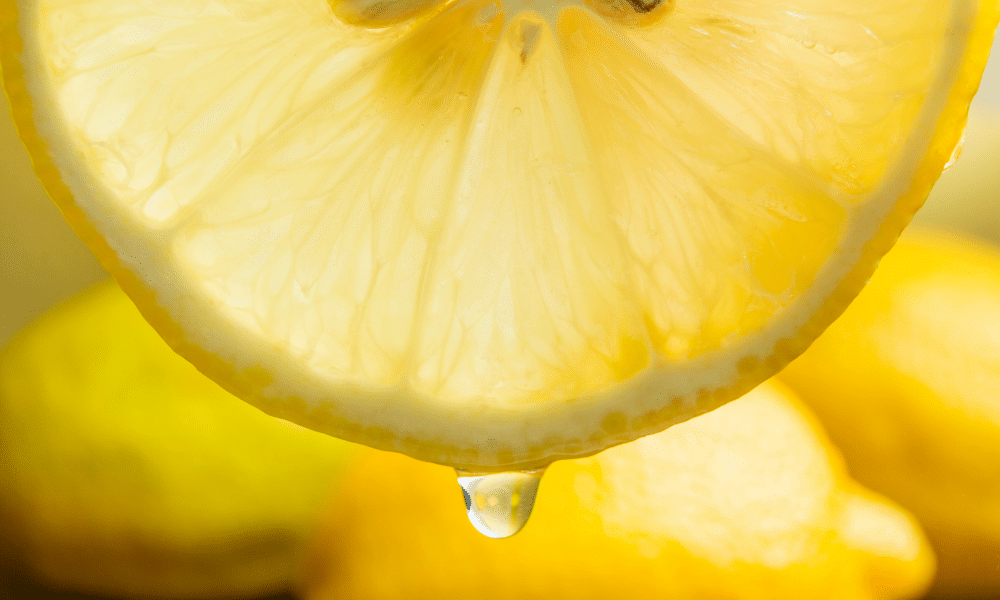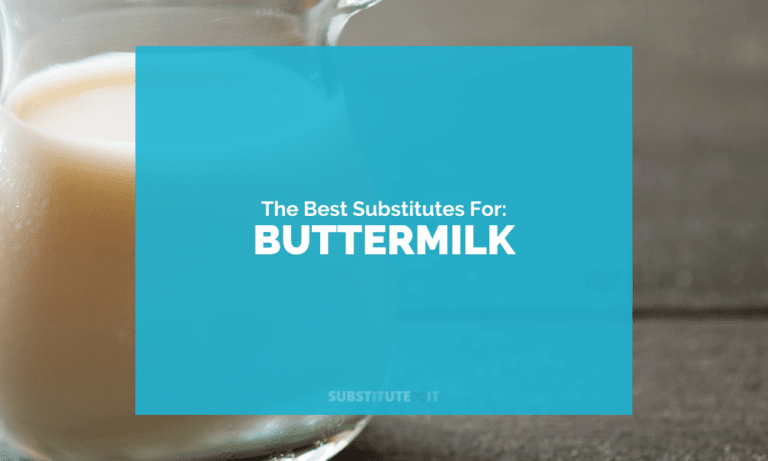Buttermilk is a very popular ingredient, used in many dishes originating from the south of the United States.
Traditionally, buttermilk was made by using the by-product of butter which was essentially fermented milk. The bacteria within this product allowed it to thicken to create an acidic milk mixture.
Nowadays, manufacturers have come up with a variety of ways to produce buttermilk effectively and cheaply. But it is still not an ingredient that everyone has in their pantry.
So, what can you use when you don’t have a spare can of buttermilk to hand?
Our 4 Substitutes for Buttermilk
The bacterium within buttermilks gives it a distinct tanginess in the same way that bacteria in cheese does but without the cheesy flavour. It is also purposely acidic.
Here are our top 4 substitutes for buttermilk:
1) Milk and Vinegar
By creating a mixture of milk and vinegar, you are essentially creating an acidic milk mixture which is what buttermilk is.
Vinegar has enough acidity within it to react effectively with baking soda to create just as much carbon dioxide as buttermilk would. Likewise, it is acidic enough to help tenderize meats.
There is a range of vinegar types you could use, but it is distilled white wine that will create the most neutral buttermilk flavour.
To strike the right balance of acidity and milk, combine 1 tablespoon of vinegar for every 240ml of milk.
Take Time to Mix Thoroughly
You want to make sure both the vinegar and the milk are properly mixed before you use them in your dish. Otherwise, you will find that some parts will taste extremely acidic while others take overly creamy.
2) Milk and Cream of Tartar
Tartar is not the most widely used ingredient in cooking. But where it is used, it is of great importance. For example, to stabilise eggs in meringue recipes.
The white, fine powder has no distinguishable taste itself, making it a good base ingredient for buttermilk. It is also fairly acidic as a by-product of fermenting wine.
Its main use is to help create air bubbles by stabilising the structure of your dish. Especially dishes that require a lot of air whipped into them.
This is why it works so well as a buttermilk base. The creamy milk and the acidic, stabilising cream of tartar will react to each other to form an airy dessert. Or, in the case of savour dishes, to tenderise meat.
Use 1 ¾ teaspoons of cream of tartar for every 240ml of milk.
Add the Ingredients Separately
Due to the structure of the cream of tartar, it is best to add it to your dish separately from milk. This will avoid any excessively clumping. Add cream of tartar when you include your dishes other dry ingredients. Then add in the milk after so that it can react better.
3) Milk and Lemon Juice
To create the same CO2 effect as buttermilk in your recipe, use bottled lemon juice instead of freshly squeezed lemon juice.
Bottled lemon juice is more acidic than when you make it yourself as manufacturers add other ingredients like sodium sulphite to change the juice’s qualities.
Lemon juice will mix very easily with milk and will undergo the same chemical reactions as buttermilk when added to your recipe.
However, you may need to use some flour or corn starch in your dish as there will be no thickening agent in either the lemon juice or the milk.
Don’t Forget About the Lemon
While lemon juice does have the perfect level of acidity of buttermilk, it is also has a very strong lemon flavour. Remember to account for this when using it in your dish as lemon could clash with the other flavours in your dish.

4) Milk and Yoghurt
Yoghurt has a range of lactic acids inside of it that makes it ferment in the same way the buttermilk does. This is why yoghurt has a similar tangy taste to buttermilk and can be used in the same contexts.
Though buttermilk is very thick, yoghurt is considerably thicker. Even with the added milk, the mixture will be too thick to use in a baking batter unless thinned.
You could always use water to make the mixture thinner, but this may affect how well your baked goods turn out.
To make a milk and yoghurt mixture, use 160g of yoghurt and 60ml of milk.
Choose Your Flavour
Plain yoghurt will make the best base for buttermilk, but if you are a fan of a particular yoghurt flavour then you can always use that instead. Just make sure to use yoghurt without any fruit pieces.
Other Substitutes for Buttermilk
If your reasoning for substituting buttermilk is dietary needs, then here are some vegan-friendly solutions for you:
- Unsweetened Soy Milk and Acidity – Instead of using regular milk, use unsweetened soy milk to create the key reactions of buttermilk without the dairy.
- Nut Milk and Acidity – Likewise, any nut milk you have to hand will work great. So long as you keep in mind the various flavour changes they will cause.
Summary
Buttermilk is more of a tool in cooking than a flavoursome ingredient, so copying its reactions within your dish are important when choosing a substitute.
However, there are many acidic ingredients you can add to regular milk to create the same kind of reactions as buttermilk.
For the closest taste to buttermilk, use a combination of milk and vinegar.
